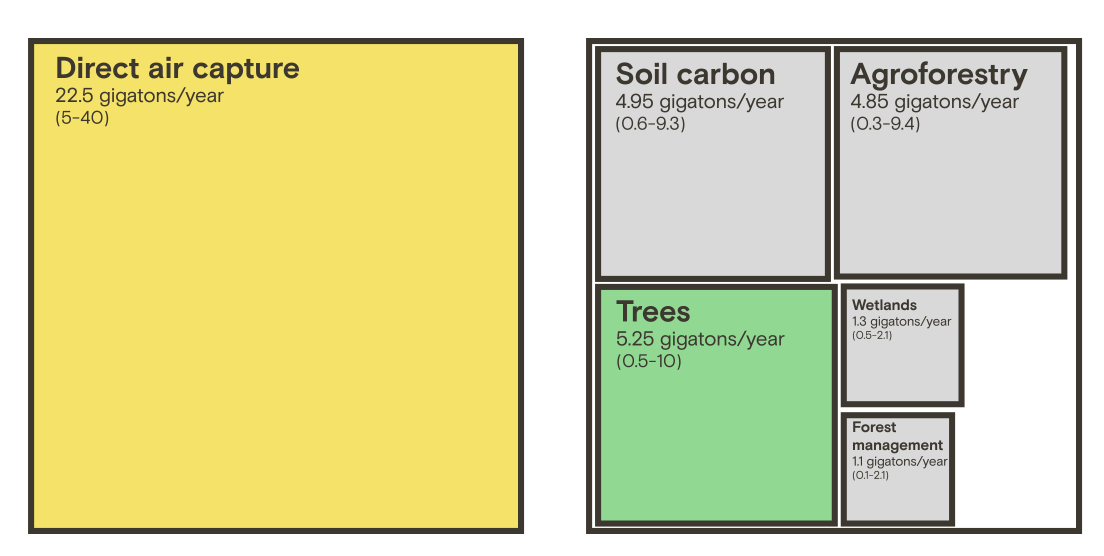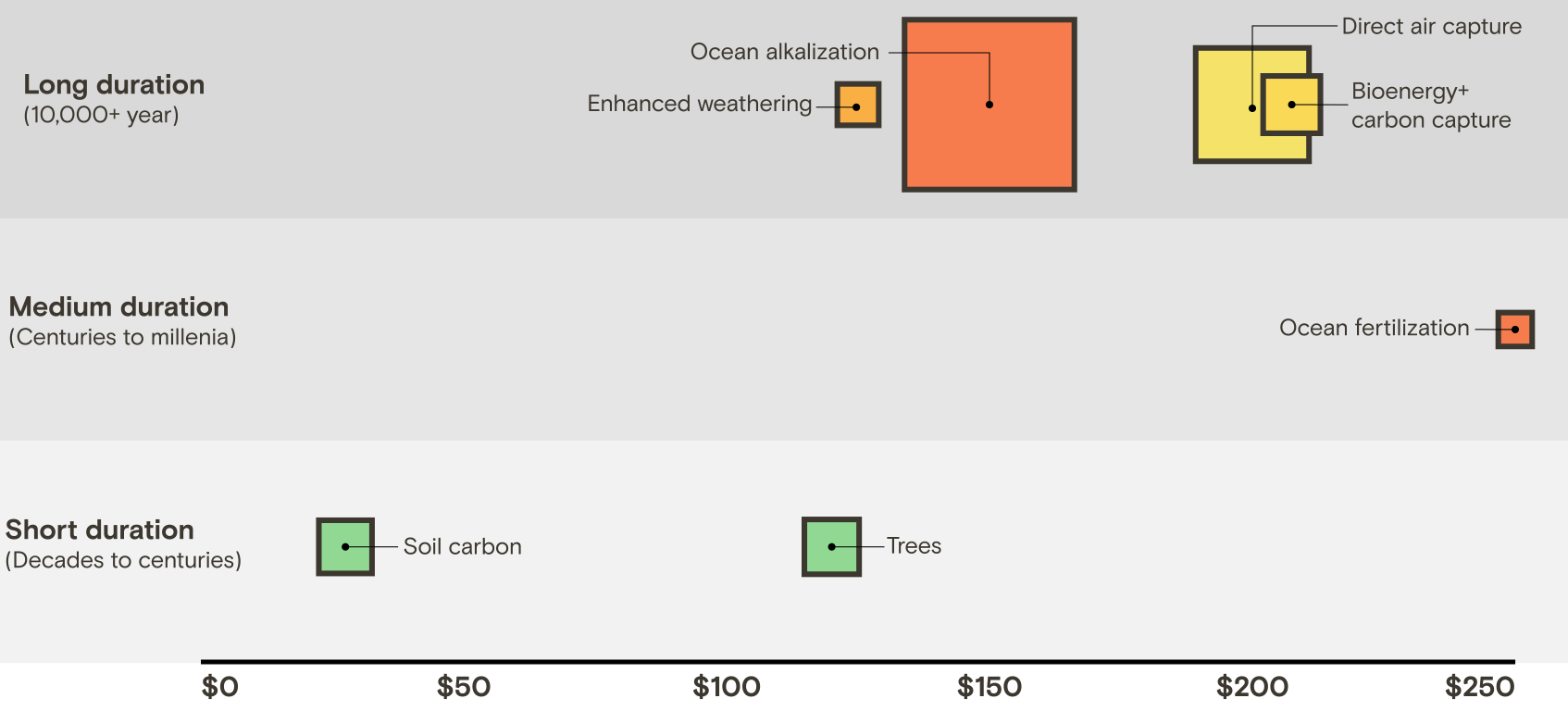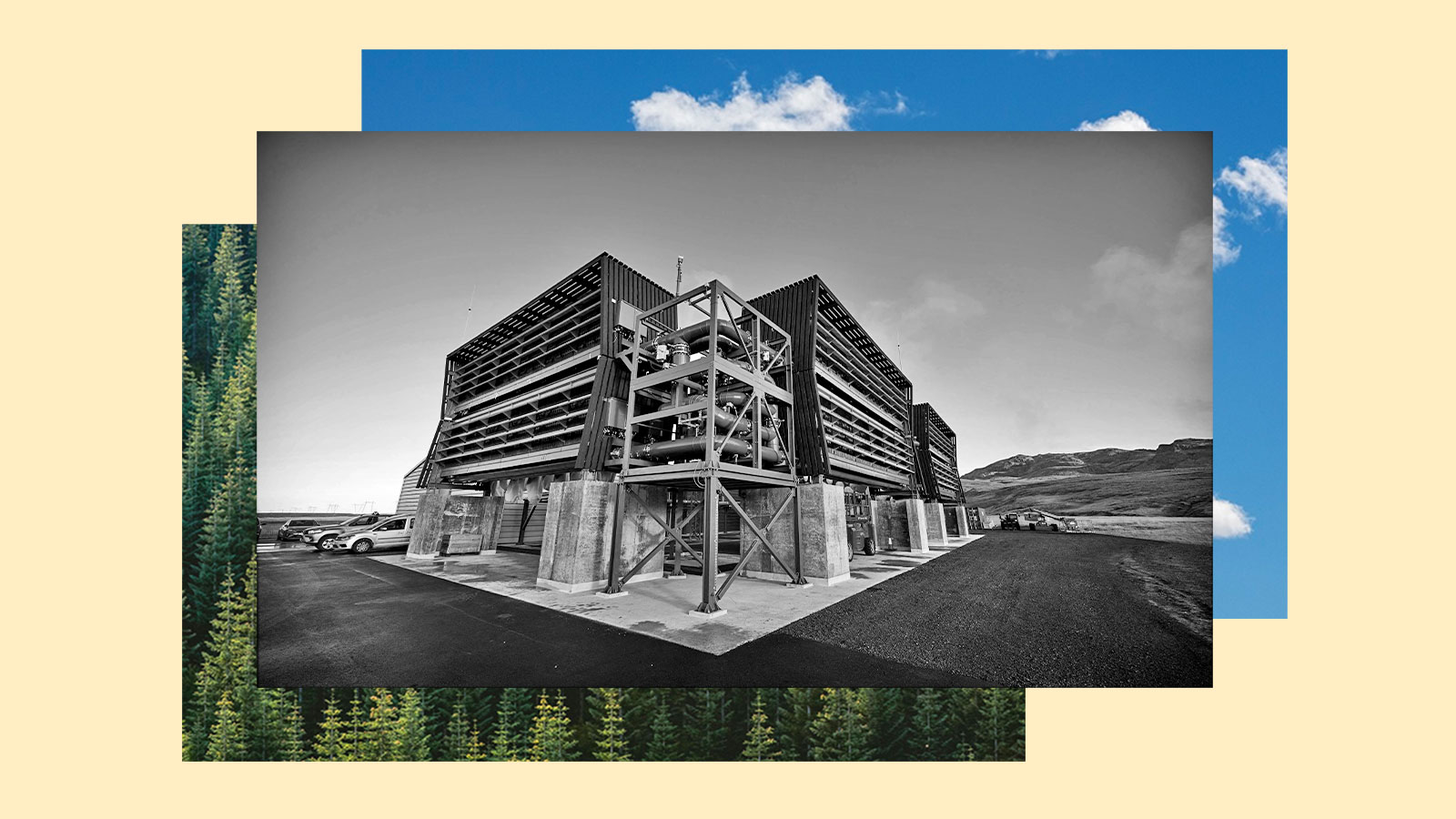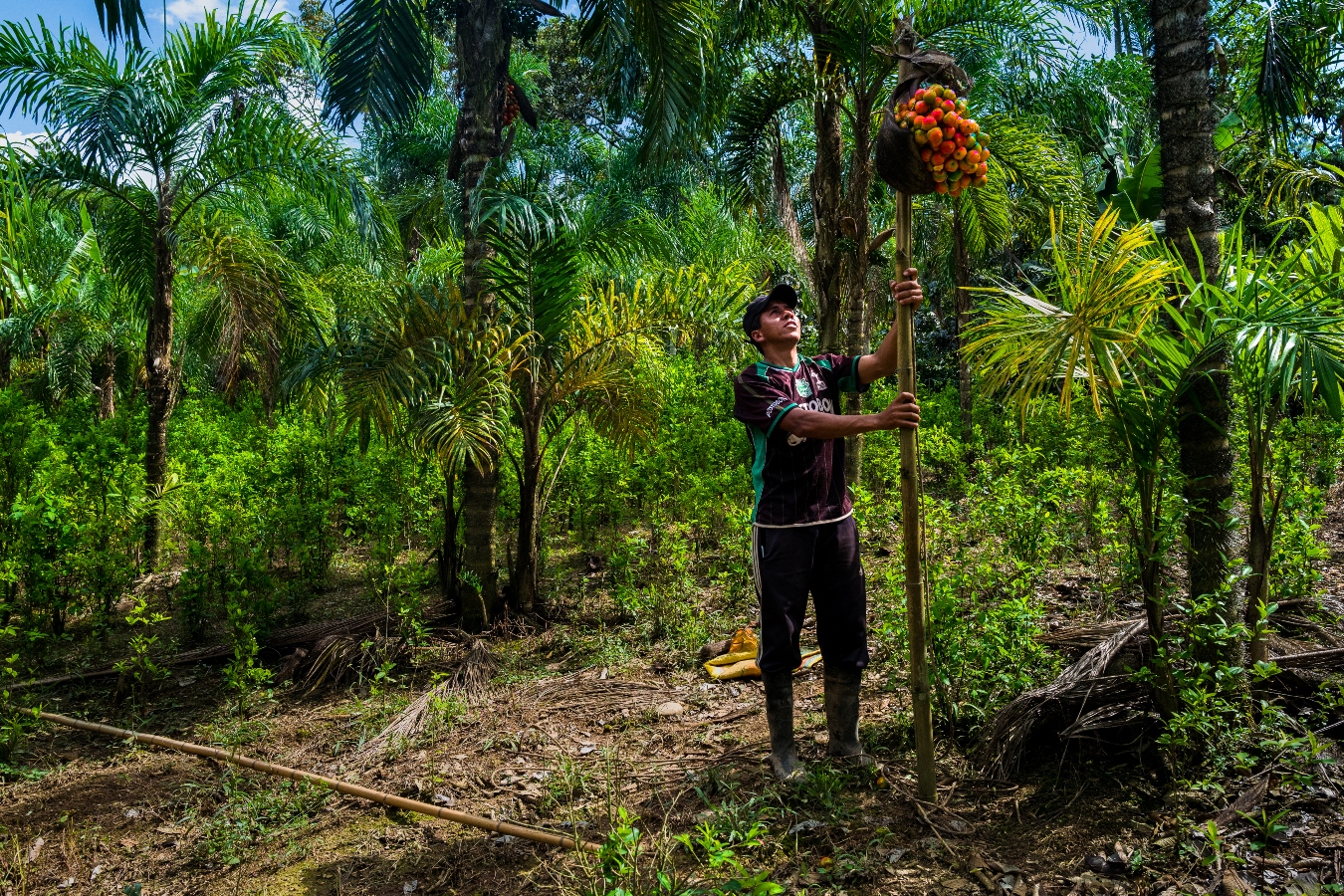This transcript has been edited for length and clarity.
Every few years, the world’s top scientists come up with hundreds of different scenarios, all aimed at limiting global warming to 2º C above pre-industrial levels. The successful plans all require serious emissions cuts — not surprising, as humans have put more than 1.7 trillion metric tons of CO2 into the atmosphere over the past three centuries. But many of those plans also require something else: sucking carbon out of the atmosphere. The challenge is, no one can agree on the best way to do it
Carbon removal is a catch-all term for anything that people do that pulls CO2 out of the air and stores it somewhere else. To meet the world’s climate goals, we would need to do this on a massive scale — anywhere from 440 billion to 1.1 trillion metric tons before the end of the century. That’s more carbon than the U.S. has emitted in its entire history.
So how do we remove all that carbon? There are two carbon removal ideas that have really captured the conversation. One is direct air capture, which are big factories that suck in tons of CO2 from the atmosphere, chemically concentrate it, and store it deep in the ground. The other idea is to simply plant trees! After all, trees have naturally sequestered carbon for millions of years. These two approaches are often viewed as technology vs. nature.
The world’s direct air capture factories currently remove around 10,000 metric tons of CO2 each year. That’s the equivalent of more than a million gallons of gasoline. But that’s small compared to the 2 billion metric tons of CO2 removed by the world’s trees and plants each year.
Trees are also a tried-and-true method for removing carbon. They’re ready to go compared to direct air capture, which is only a few decades old. The direct air capture industry does exist, with a few facilities up and running today, but experts say it still has a ways to go.
To better understand why pulling carbon out of the atmosphere is so difficult, imagine being given a martini and being asked to somehow extract all the gin. (Keep in mind, CO2 makes up a much smaller proportion of the atmosphere than gin does in a martini.) That’s part of the reason why carbon-removing machines have to rely on energy-intensive chemical reactions and processes, which come with a pretty hefty price tag. Critics of direct-air capture think there are way better uses for all that energy and money. Trees, on the other hand, are pretty cheap and they’re self-powered by the sun.
Given those arguments, trees seem like the obviously better approach for carbon removal. But the choice is not nearly as clear-cut as it might seem.
Scientists think direct air capture, once it is better developed, could potentially store a lot of carbon — more even than the potential of the vast majority of the “natural” forms of carbon removal happening today.

You also need to consider what happens to the carbon after it’s removed. Trees suck up carbon, turning it into wood as they grow bigger, storing this living carbon for decades or sometimes even centuries. But they can’t store it forever. Eventually, trees die and decompose, which means that carbon in plants doesn’t actually stay out of the atmosphere all that long. For this reason, scientists call this the “fast carbon cycle.”
If you want to remove carbon for a really long time, your best bet is the slow carbon cycle. This is all the carbon that’s stored deep in the Earth. Normally, it takes up to 200 million years for carbon in this cycle to move between rocks, soil, ocean, and atmosphere, but humans short-circuited this cycle when we started digging up fossil fuels. As we burned coal and oil from the ground, we were inadvertently pulling massive amounts of ancient carbon out of the slow carbon cycle, and into our atmosphere, leading to the climate crisis we’re in today.
Technologies like direct air capture allow us to do the exact opposite: to put that carbon back into the slow carbon cycle where it came from. When direct air capture facilities put carbon back underground, that carbon could stay there for 10,000 years or more.
So, while the goals of direct air capture and tree-based carbon removal are the same, they are really different approaches — and they’re not even the only ones. There are dozens of other ideas for removing carbon from the atmosphere, and they’re all a little different when it comes to cost, readiness level, capacity, and storage duration.

There are ideas for storing organic carbon in wetlands, in soil, and even in algae in the ocean.
Some plans propose converting CO2 into minerals, on land and in the ocean. You can even combine trees and direct air capture — using trees or plants for energy, and capturing and injecting the carbon into the ground.
Scaling up our carbon removal is going to be challenging, and there are legitimate concerns that it could distract from the highest priority goal of cutting emissions in the first place. But even with dramatic cuts to how much CO2 we release into the atmosphere, scientists say carbon removal is probably going to be necessary.
We got our data from the 2022 IPCC report, which compiled data from dozens of carbon removal studies that estimated the cost, capacity, and storage duration for each carbon removal idea. It also ranked how well each technology is developed, on a scale of 1-9.
The report presents low and high estimates for each category. For simplicity, we chose an average of the two estimates to show on our charts. We also aimed to show the ranges wherever possible. Although there are plenty of ways to remove carbon with trees, we focused on “afforestation/reforestation” — which is a technical term for planting new forests or restoring cut forests.
At one point in the video, we show a visual depicting the amount of carbon currently being removed by trees and other plants. This figure at 2:03 comes from the State of Carbon Dioxide Removal report, and includes carbon removed through afforestation, reforestation, agroforestry, soil carbon, wetland restoration, and improved forest management. The report also includes carbon stored in durable wood products, though this sub category is subject to scientific debate. Later, at 2:34, we chose to exclude durable wood products in our figure depicting tons of carbon removed due forms of natural processes. This was based on a lack of data in the IPCC report on durable wood goods.
For simplicity and data purposes, we couldn’t include every carbon removal idea in our video. If you’d like to learn about more carbon removal ideas, check out the 2022 IPCC report.



